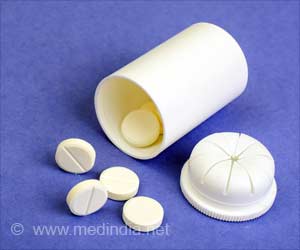Researchers say a therapy commonly used to remove dangerously high levels of lead from the body may also improve muscle functions.
Researchers say a therapy commonly used to remove dangerously high levels of lead from the body may also improve muscle functions associated with postural balance and movement in lead-exposed children.
Led by Amit Bhattacharya, PhD, the UC team found that children treated with succimer (SUX-sim-er) chelation therapy showed a 19 percent improvement in their ability to perform moving tasks—such as crossing an obstacle or walking—than those who did not receive treatment.Chelation (ke-LAY-shun) is a technique, nicknamed “scrubbing,” in which a drug is administered to seek out and bind to poisonous heavy metals, such as lead or mercury, in the bloodstream. The compound resulting from this binding is then excreted in the urine, essentially cleaning out the dangerous metals.
Succimer (Chermet) is an oral chelating drug approved by the Food and Drug Administration to treat children with extremely elevated blood lead levels (44 to 69 micrograms per deciliter).
The UC team has found that succimer chelation therapy improved static balance by 6 percent.
“Lead exposure is a very serious issue,” says Bhattacharya, professor of environmental health and lead author of the study, “and it’s important to identify early signs of neuromotor (muscle-function) exposure effects—such as impaired postural balance or locomotion—before permanent damage occurs. Our research may help develop control strategies for minimizing exposure to lead at an earlier stage.”
The team reports its findings in the May 2007 edition of the journal Neurotoxicology. This is the first study to report that succimer chelation therapy can produce beneficial effects on postural balance and movement in lead-exposed children.
Advertisements
Bhattacharya and his team wanted to know if succimer chelation therapy could eliminate or minimize lead-associated muscle-function impairments in children exposed to high levels of lead early in life.
Advertisements
Tests were designed to eliminate or challenge factors that help maintain postural balance, such as eyesight and visual context.
“Our statistical analysis revealed that subjects who received succimer therapy showed a significant improvement in balance and movement compared to the non-therapy group,” says Bhattacharya. “This new data—combined with our previous research—leads us to believe that succimer therapy may also result in reduced injuries among this at-risk population.”
In the October 2006 issue of the Journal of Adolescent Health, Bhattacharya’s team reported that teenagers who experienced high blood lead levels during childhood appear to suffer more accidental injuries than those who had lower lead exposure.
He says further research is needed to determine if succimer therapy can minimize long-term negative effects of lead on balance and movement.
According to the most recent U.S. National Health and Nutrition Examination Survey, more than 434,000 children between the ages of 1 and 5 have elevated blood lead levels. Lead is known to be associated with decreased intellectual capabilities and balance disorders among infants, children and teens.
Source-Eurekalert
SRM/B






